
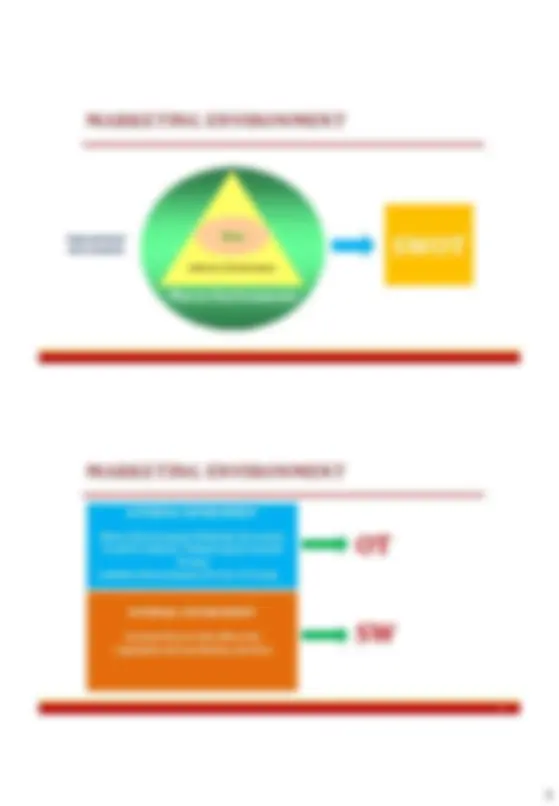
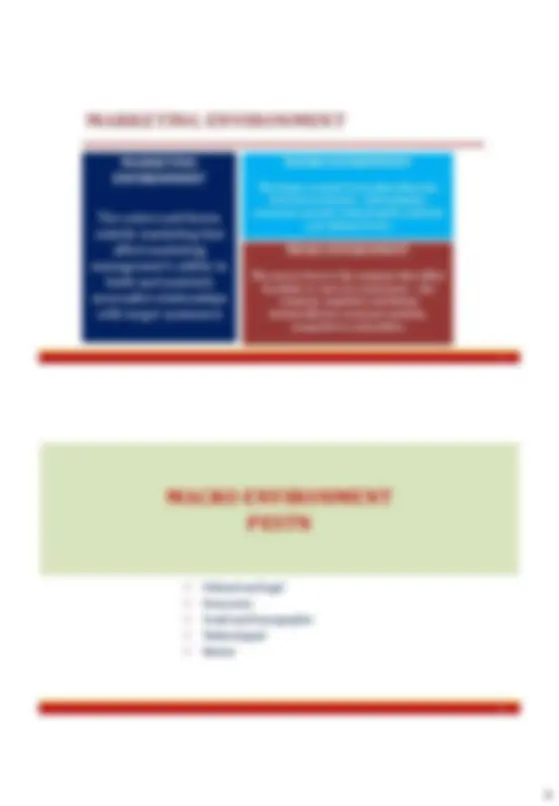
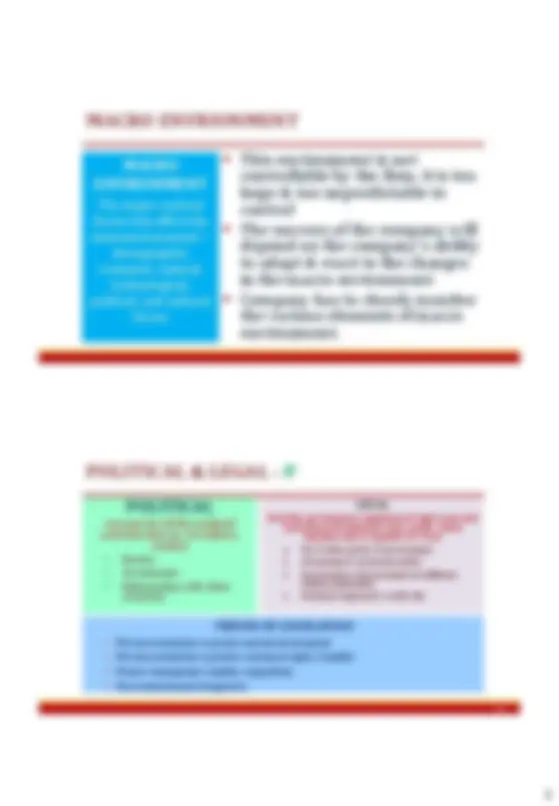
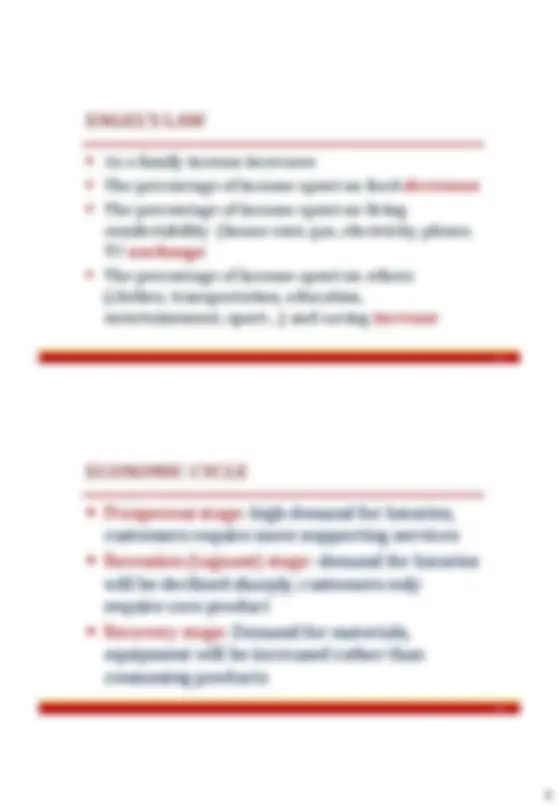
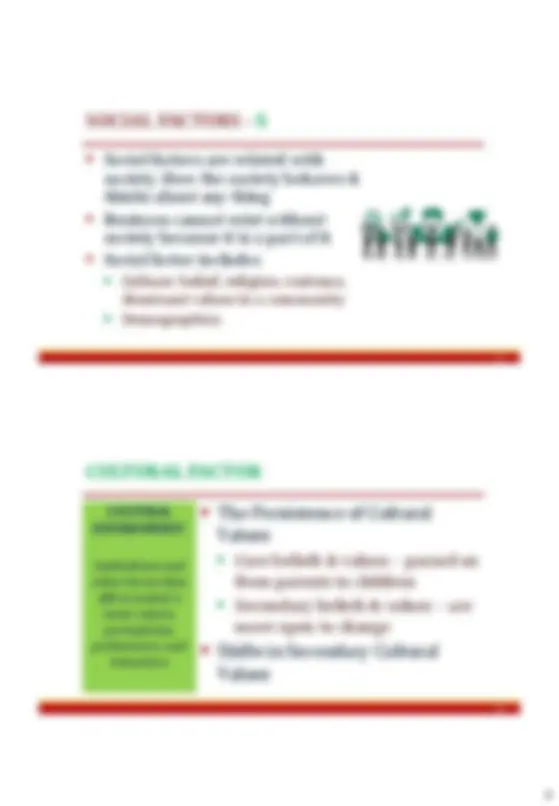
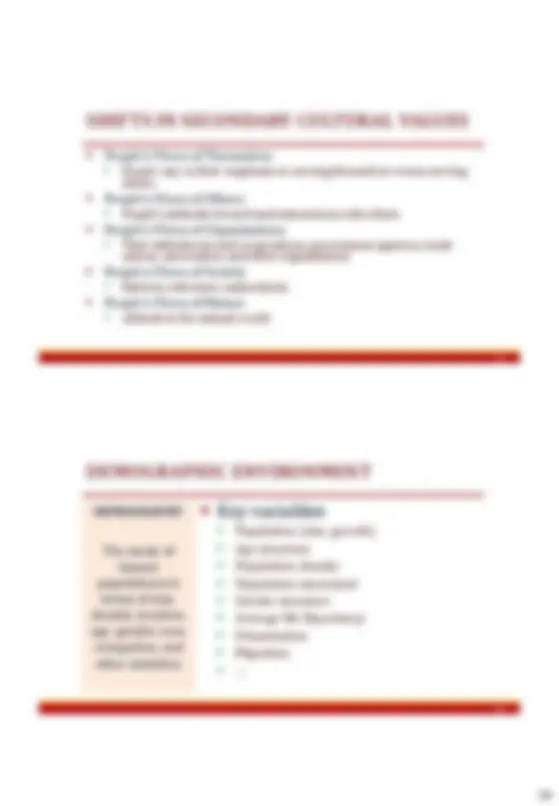
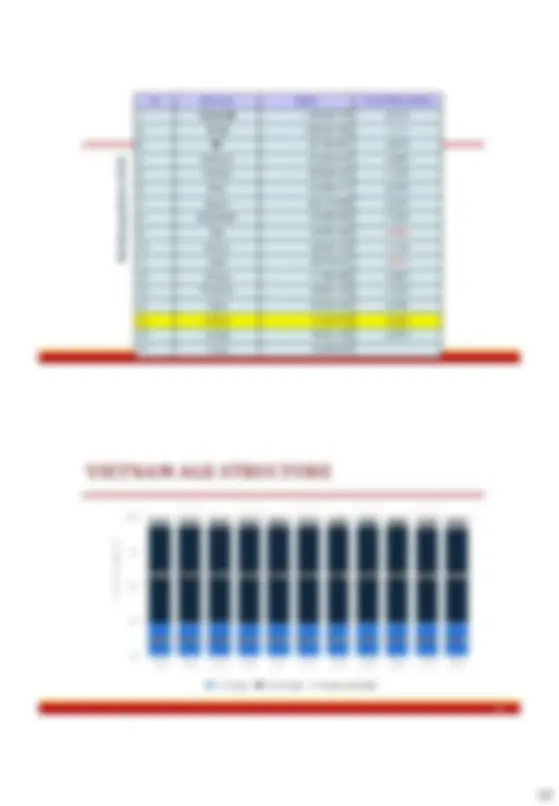
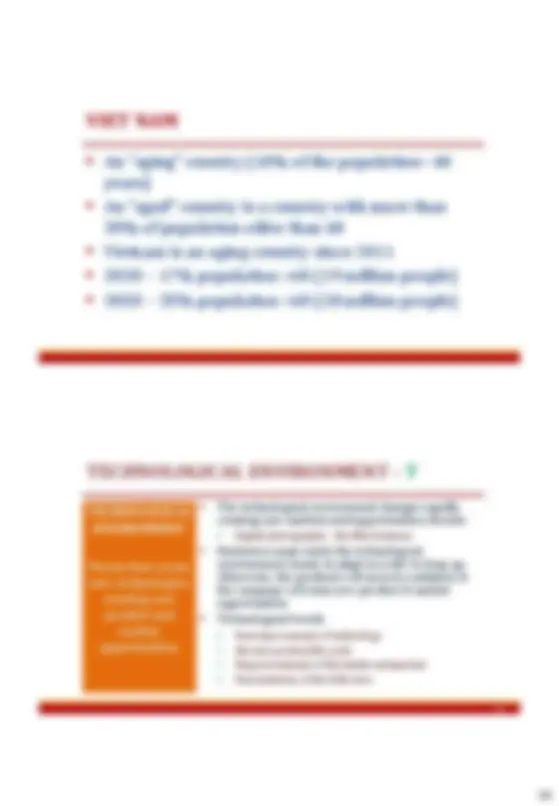
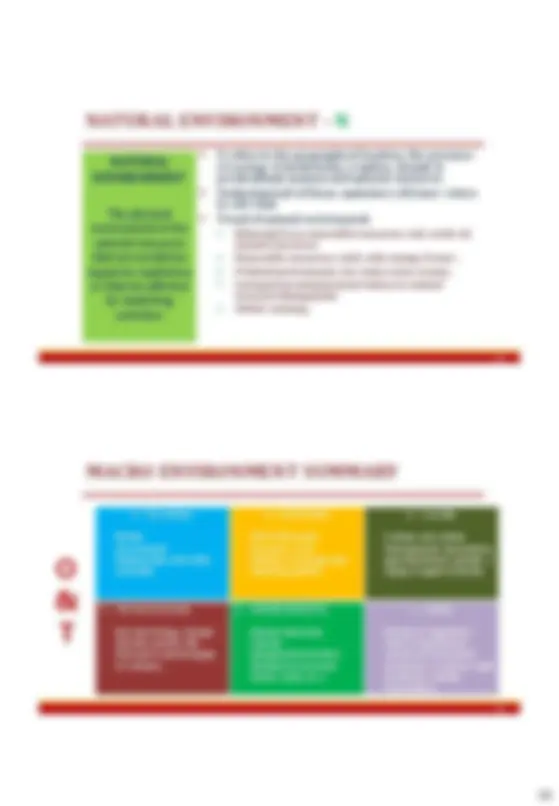
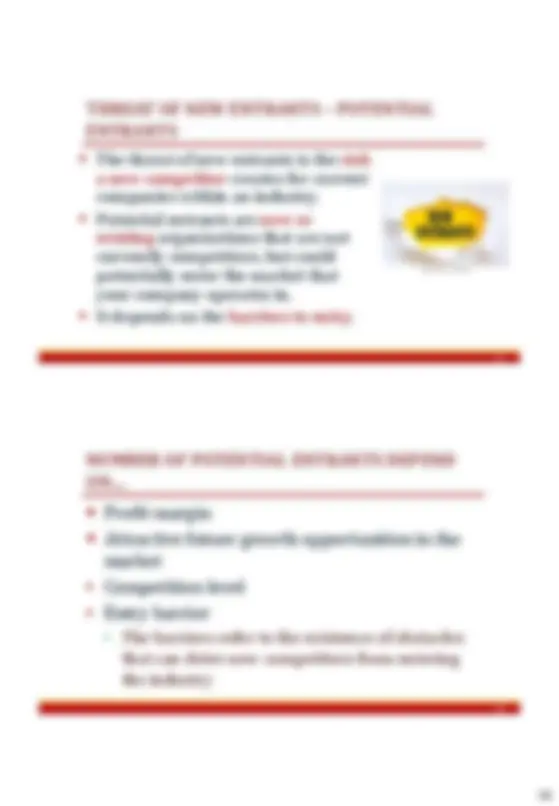
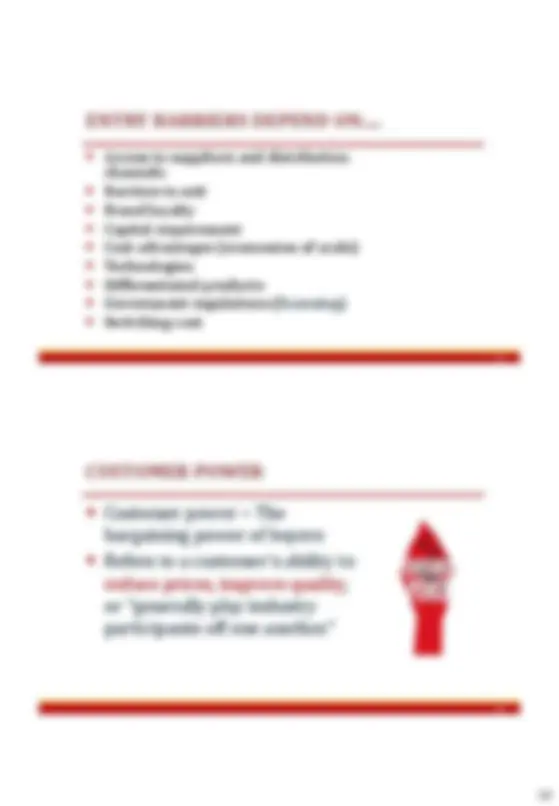
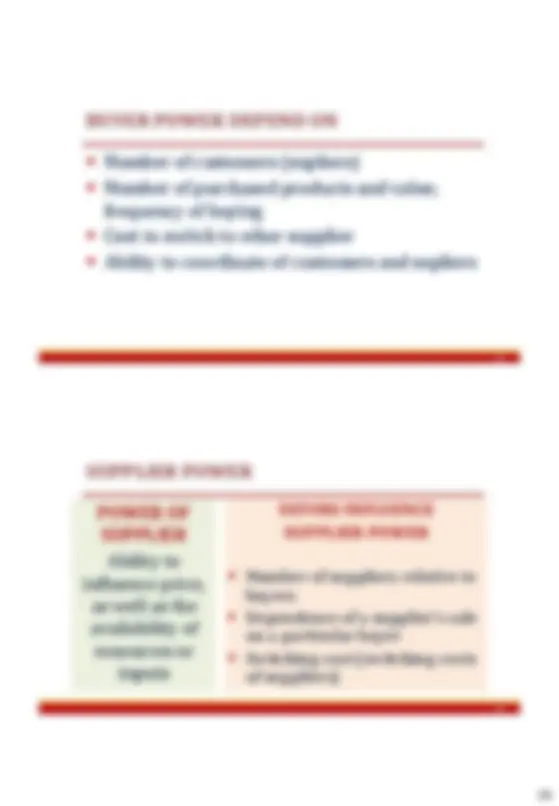
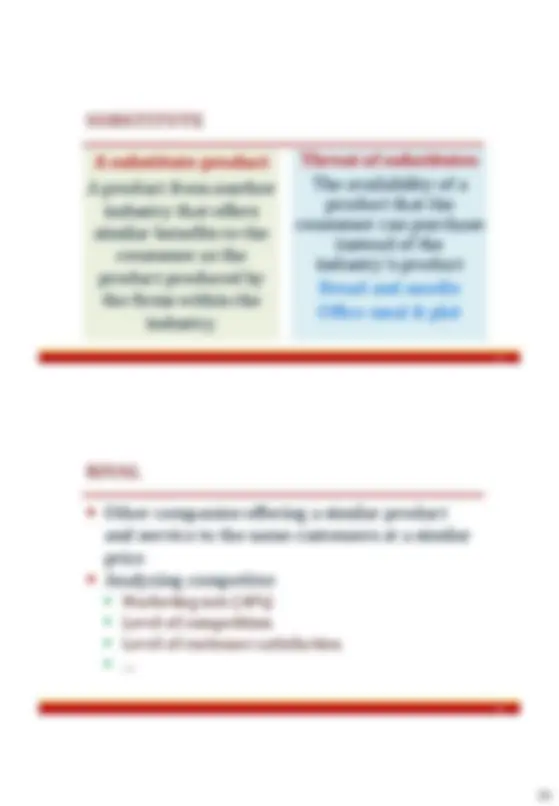
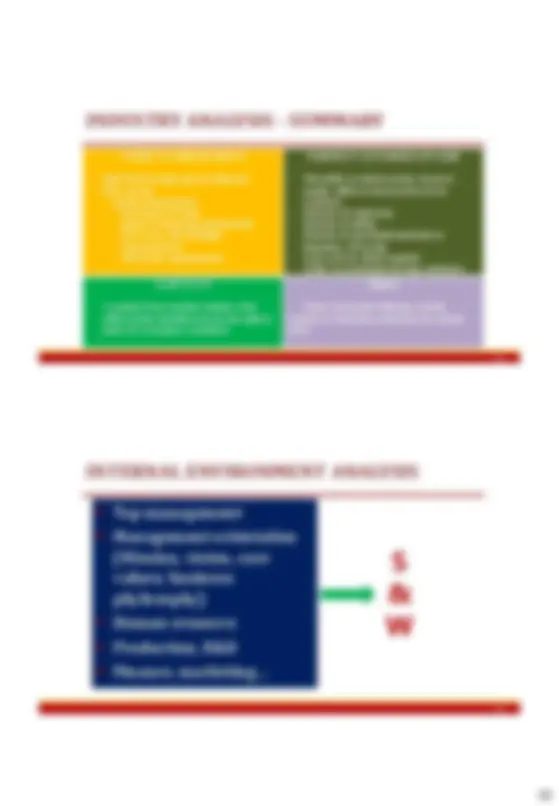
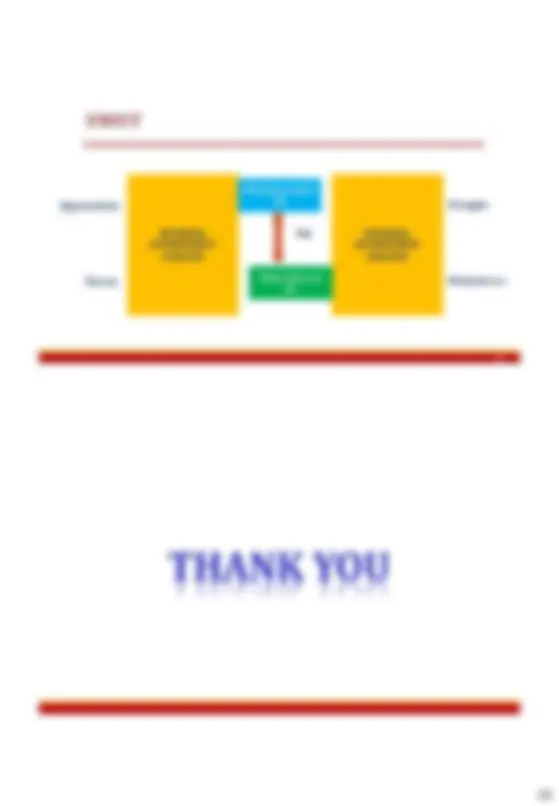


Study with the several resources on Docsity

Earn points by helping other students or get them with a premium plan


Prepare for your exams
Study with the several resources on Docsity

Earn points to download
Earn points by helping other students or get them with a premium plan
Community
Ask the community for help and clear up your study doubts
Discover the best universities in your country according to Docsity users
Free resources
Download our free guides on studying techniques, anxiety management strategies, and thesis advice from Docsity tutors
English is the third-most widely spoken language in the world as of 2023 and the primary language of much of the developed world, including the United ...
Typology: Cheat Sheet
1 / 23

This page cannot be seen from the preview
Don't miss anything!
















1
PhD. Nguyen Thi Mai Anh INTERNATIONAL SCHOOL OF MANAGEMENT & ECONOMICS NATIONAL ECONMICS UNIVERSITY 2
1.1 Marketing & Maketing management 1.2 Core Marketing concepts 1.3 Marketing management orientations 1.4 Marketing mix
3
2.1 Marketing Information System 2.2 Market research 4
3.1 Macro Environment 3.2 Industry Environment 3.3 Internal Environment
MARKETING ENVIRONMENT MARKETING ENVIRONMENT The actors and forces outside marketing that affect marketing management’s ability to build and maintain successful relationships with target customers 7 MACRO ENVIRONMENT The larger societal forces that affect the microenvironment—demographic, economic, natural, technological, political, and cultural forces MICRO ENVIRONMENT The actors close to the company that affect its ability to serve its customers— the company, suppliers, marketing intermediaries, customer markets, competitors, and publics. 8
▪ Political and legal ▪ Economics ▪ Social and Demographic ▪ Technological ▪ Nature
MACRO ENVRIONMENT MACRO ENVIRONMENT The larger societal forces that affect the microenvironment— demographic, economic, natural, technological, political, and cultural forces ▪ This environment is not controllable by the firm, it is too huge & too unpredictable to control ▪ The success of the company will depend on the company’s ability to adapt & react to the changes in the macro environment ▪ Company has to closely monitor the various elements of macro environment. POLITICAL & LEGAL - P 10 POLITICAL Account for all the political activities that go on within a country ▪ Parties ▪ Government ▪ Relationship with other countries LEGAL Includes government regulation & legal issue and both formal & informal rules under which business has to operate its work ● Tax & labor policy of government ● Government’s economic policy ● Involvement of government in different trading agreement ● National, regional & worldwide TRENDS OF LEGISLATION Put more attention to protect natural environment Put more attention to protect consumer rights/ benefits Protect transparent/ healthy competition More international integration
GDP VIET NAM Year (^2013 2014 2015 2016 2017 2018 2019 ) GDP growth rate (%/year) 5.8 5.98 2.80 5.03 7.89 7.08 (^) 7.02 2. GDP/capita (USD/person) 1.900 2.052 2.109 2.215 2.389 2.564 (^) 2.769 2. 13 GDP/CAPITA - VIETNAM 2014
ENGEL’S LAW ▪ As a family income increases ▪ The percentage of income spent on food decreases ▪ The percentage of income spent on living comfortability (house rent, gas, electricity, phone, TV unchange ▪ The percentage of income spent on others (clothes, transportation, education, entertainement, sport…) and saving increase 15 ECONOMIC CYCLE ▪ Prosperous stage: high demand for luxuries, customers require more supporting services ▪ Recession (tagnant) stage: demand for luxuries will be declined sharply, customers only require core product ▪ Recovery stage: Demand for materials, equipment will be increased rather than consuming products 16
SHIFTS IN SECONDARY CULTURAL VALUES ▪ People’s Views of Themselves ▪ People vary in their emphasis on serving themselves versus serving others ▪ People’s Views of Others ▪ People’s attitudes toward and interactions with others ▪ People’s Views of Organizations ▪ Their attitudes toward corporations, government agencies, trade unions, universities, and other organizations ▪ People’s Views of Society ▪ Patriots, reformers, malcontents ▪ People’s Views of Nature ▪ Attitude to the natural world 19 DEMOGRAPHIC ENVIRONMENT ▪ Key variables ▪ Population (size, growth) ▪ Age structure ▪ Population density ▪ Population movement ▪ Gender structure ▪ Average life Expectancy ▪ Urbanization ▪ Migration ▪ … 20
The study of human populations in terms of size, density, location, age, gender, race, occupation, and other statistics.
CHANGES IN POPULATION ▪ The Changing Age Structure of the Population ▪ Baby boomers - The 78 million people born during the years following World War II and lasting until 1964. ▪ Generation X - The 49 million people born between 1965 and 1976 in the “birth dearth” following the baby boom. ▪ Millennials (or generation Y) The 83 million children of the baby boomers born between 1977 and 2000 ▪ generation Z - People born after 2000 (although many analysts include people born after 1995) who make up the kids, tweens, and teens markets. ▪ The Changing household pattern 21 Traditional household ▪ Husband, wife & children Non-traditional household ▪ Singles (VN-10.1% (2019) Sweeden (47%); Norway (42%); England (34%); America (38%); Korea (29% - 36% (2045) ▪ Single-parent families ▪ Divorcees Growing rapidly
World population 2020 No Quốc gia Người Tốc độ tăng trưởng 1 Trung quốc 1.439.323.776 +0,41% 2 Ấn độ 1.380.004.385 +1, 3 Mỹ 331.002.651 +0,81% 4 Indonesia 273.523.615 +0.86% 5 Pakistan 220.892.340 +1,43% 6 Brasil 212.559.417 +0,73% 7 Nigeria 206.139.589 +2,43% 8 Bangladesh 164.689.383 +1,04% 9 Nga 145.934.462 - 0,08% 10 Mexico 128.932.753 +1,12% 11 Japan 126.476.461 - 0,21% 12 Ethiopia 114.963.588 +2,85% 13 Philipines 109.581.078 +1,57% 14 Egypt 102.334.404 +2,45% 15 Vietnam 97.338.579 +0.93% 16 (congo) 89.561.403 +2,37% 17 Turkey 84.339. VIETNAM AGE STRUCTURE 26
VIET NAM ▪ An “aging” country (10% of the population> 60 years) ▪ An “aged” country is a country with more than 20% of population older than 60 ▪ Vietnam is an aging country since 2011 ▪ 2030 – 17% population >60 (19 million people) ▪ 2050 – 25% population >60 (28 million people) TECHNOLOGICAL ENVIRONMENT - T ▪ The technological environment changes rapidly, creating new markets and opportunities, threats ▪ Digital photography - the film business ▪ Marketers must watch the technological environment closely & adapt in order to keep up. Otherwise, the products will soon be outdated, & the company will miss new product & market opportunities ▪ Technological trends ▪ Fast improvement of technology ▪ Shorter product life-cycle ▪ Huge investment of the leader enterprises ▪ Fast imitation of the followers 28
Forces that create new technologies, creating new product and market opportunities.
TREND IN THE WORLD ▪ VUCA ▪ 4.0 technologies ▪ Globalization ▪ Aging in many countries ▪ The rise of Asia ▪ Environmental concern 31 ▪ Increasing number of working woman ▪ Increasing number of vegetarian ▪ Increasing number of single; divorcees ▪ Falling fertility rates ▪ People become concern more on the health
VUCA WORLD
33
▪ Porter 5 forces Supliers Competitor Rivals Customers Threats of new entrants Substitutes Porter Five forces 3.2 INDUSTRY ENVIRONMENT
ENTRY BARRIERS DEPEND ON…. ▪ Access to suppliers and distribution channels ▪ Barriers to exit ▪ Brand loyalty ▪ Capital requirement ▪ Cost advantages (economies of scale) ▪ Technologies ▪ Differentiated products ▪ Government regulations (licensing) ▪ Switching cost 37 CUSTOMER POWER ▪ Customer power = The bargaining power of buyers ▪ Refers to a customer's ability to reduce prices, improve quality, or “generally play industry participants off one another.” 38
BUYER POWER DEPEND ON ▪ Number of customers (supliers) ▪ Number of purchased products and value; frequency of buying ▪ Cost to switch to other supplier ▪ Ability to coordinate of customers and supliers 39 SUPPLIER POWER POWER OF SUPPLIER Ability to influence price, as well as the availability of resources or inputs 40 FATORS INFLUENCE SUPPLIER POWER ▪ Number of suppliers relative to buyers ▪ Dependence of a supplier’s sale on a particular buyer ▪ Switching cost (switching costs of suppliers)